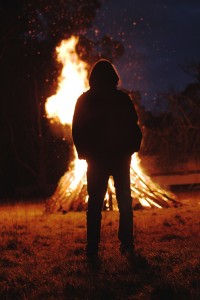
On March 20th 2016 – this upcoming Sunday – is March Equinox.
Wait, you don’t know what that means? Well, don’t stress. We can tell you what you need to know about this special day of spring!
Get the dates, customs and all other kinds of information.
What’s March Equinox?
The scientific explanation of equinox is the following:
An equinox is an astronomical event in which the plane of Earth's equator passes through the center of the Sun.
Less scientifically spoken, March equinox is the time of the year when day and night have the (almost) same length; namely 12 hours (more or less).
It marks the day when the sun crosses the celestial equator. This event occurs twice a year, once in spring and once in autumn. This is the same for both the northern and southern hemisphere, just the months are switched. Thus, the Spring or vernal equinox on the northern hemisphere is known as the autumn or fall equinox in the southern hemisphere (and vice versa).

Why “Equinox”?
Equinox derives from Latin, meaning as much as “equal night”.
When Is It?
Every year, March equinox occurs in the time between the 19th and 21st March. Thanks to the leap year, the day never drifts further away from March 20th.
The universal coordinate time for this year’s March equinox is the 20th, however the local times depend on the time zone you are in. You can check out the exact day for your town and time zone here.
Equinox Customs & Traditions
All around the world, different traditions and customs are associated with March equinox. On the northern hemisphere it is known for typical spring festivals and other holidays that take place around the time of equinox like Easter.
However, one of the most famous celebrations comes from ancient Mayan history. At the time of March equinox, a ritual sacrifice was held by the Mayan pyramids in Mexico. The traditional place is said to be the El Castillo pyramid in Chichen Itza in Mexico. If historical findings are correct, some rather blood-filled rituals were traditionally held on top of the pyramid.
More modern traditions are, of course, less bloody. For example, March Equinox is also international World Storytelling Day. The goal or custom of this day is that as many people as possible engage in storytelling at different places in different languages; either as listeners or tellers.
Having its roots in old pagan rites, the traditional Germanic Easter celebrations are held around March equinox. Ostara, so the name of the old pagan festival, is a time of rebirth, symbolized by colorful egg decorations. In some regions of Europe, it is also a tradition to light up huge bonfires to symbolically “burn winter” and welcome spring.




